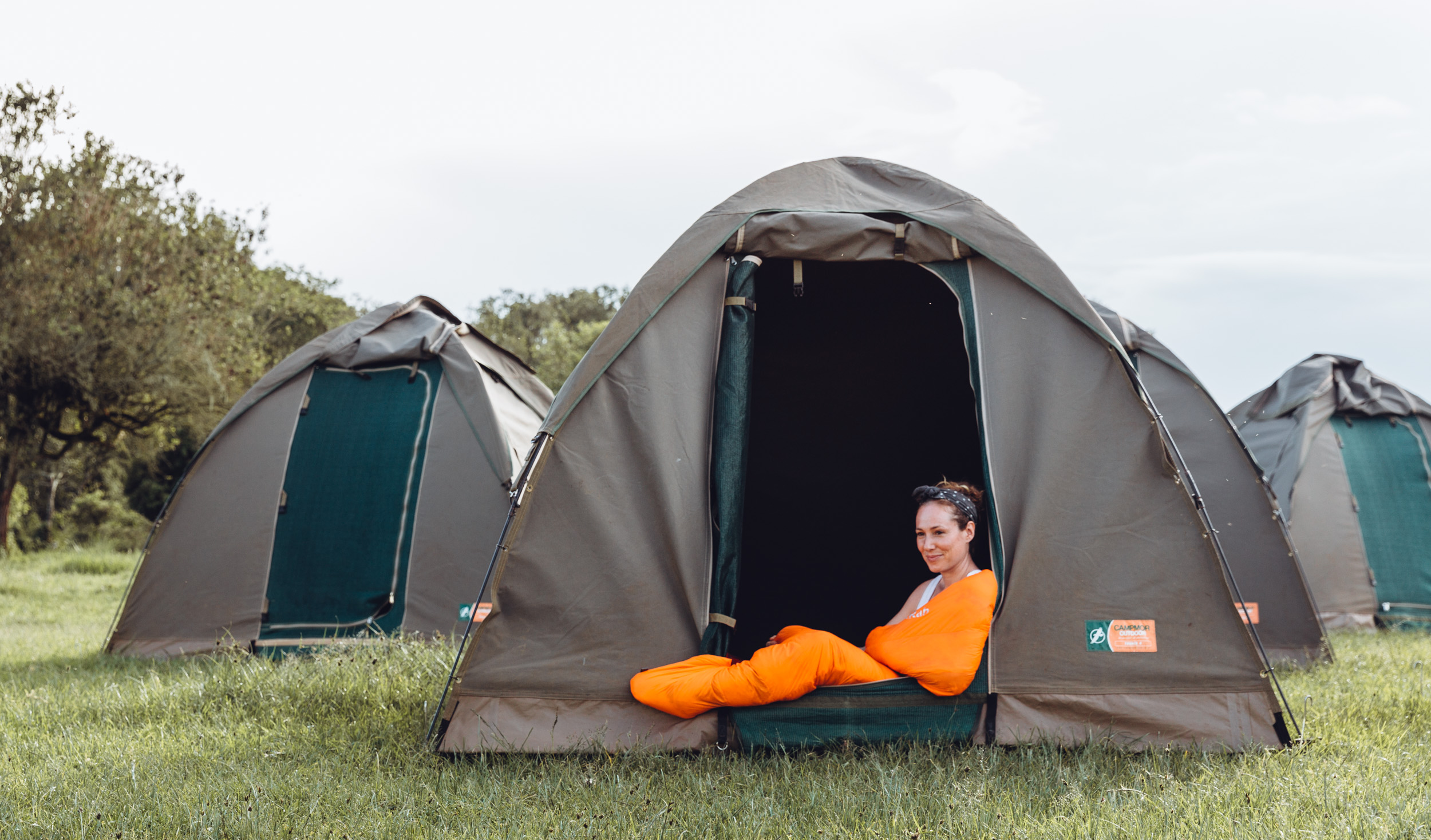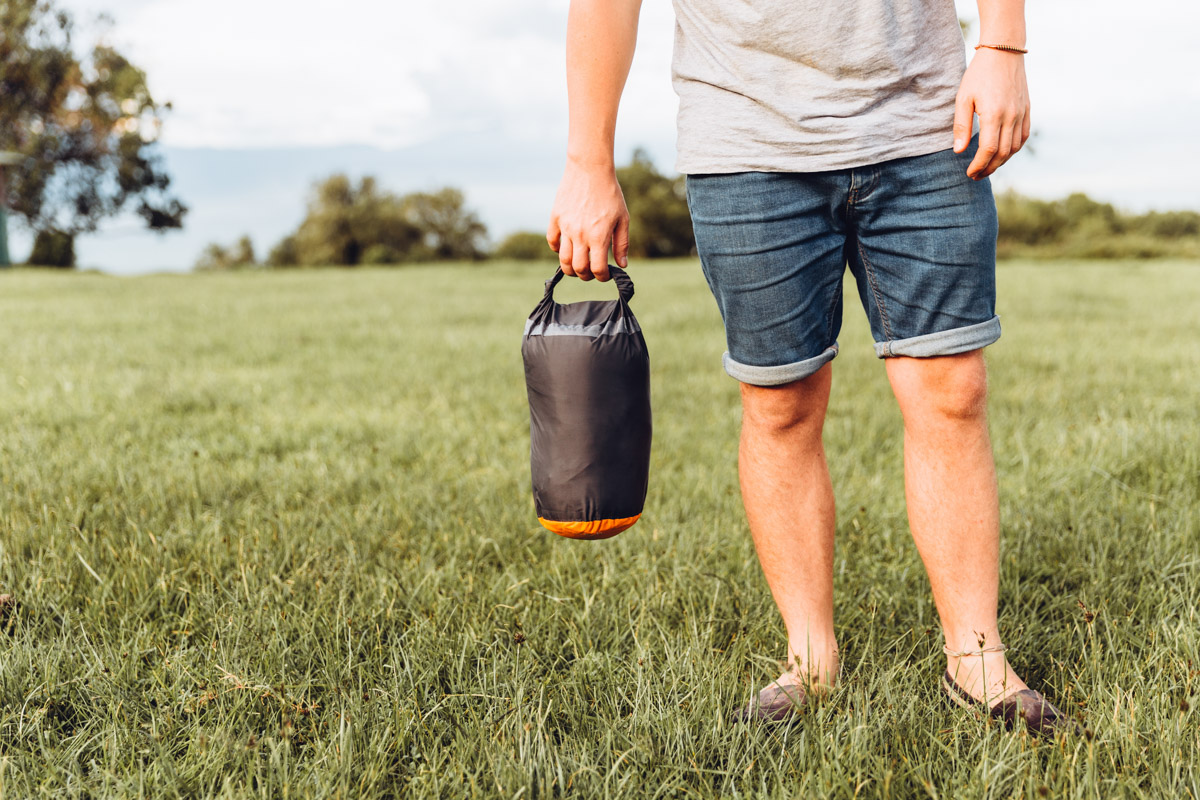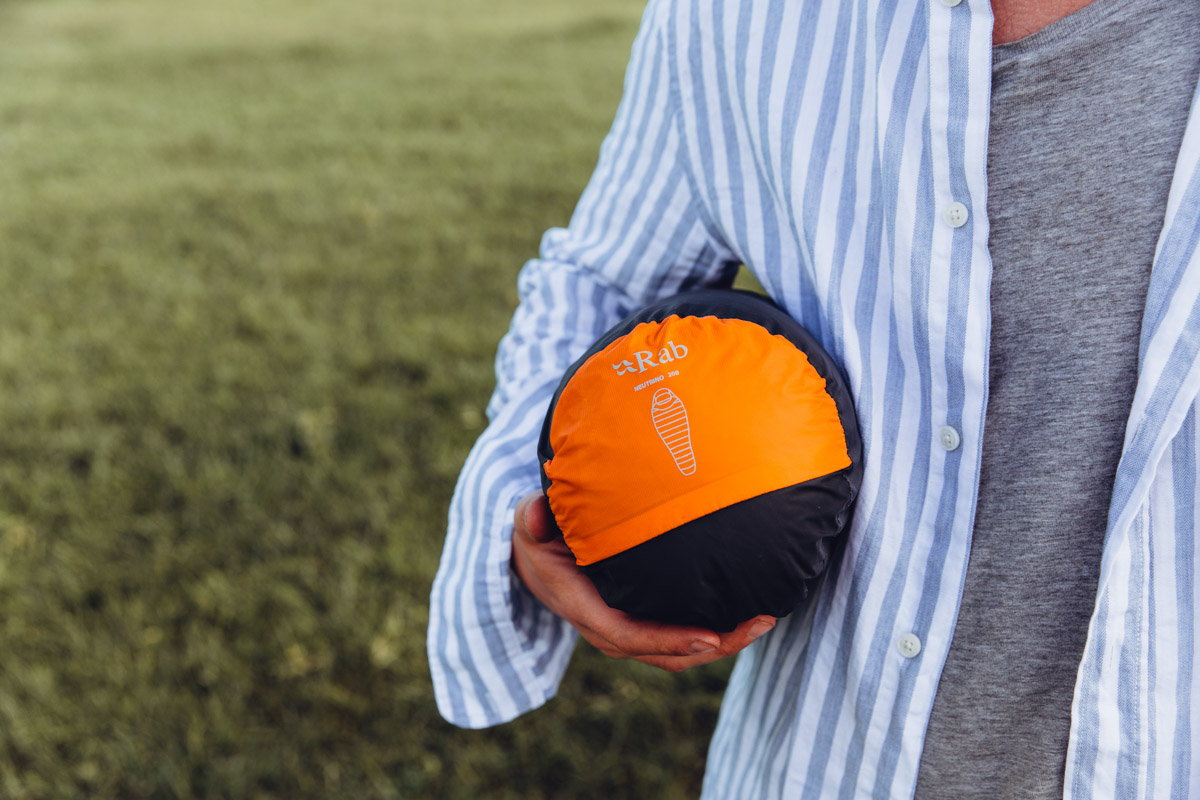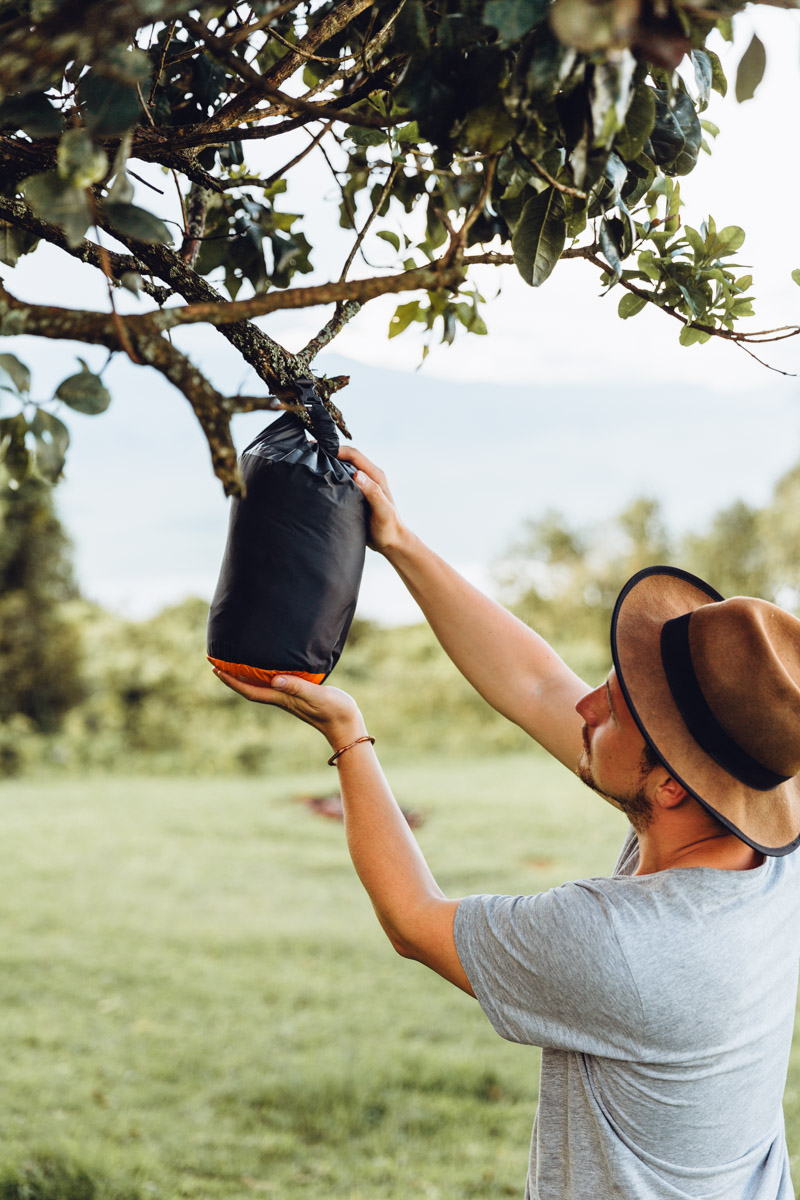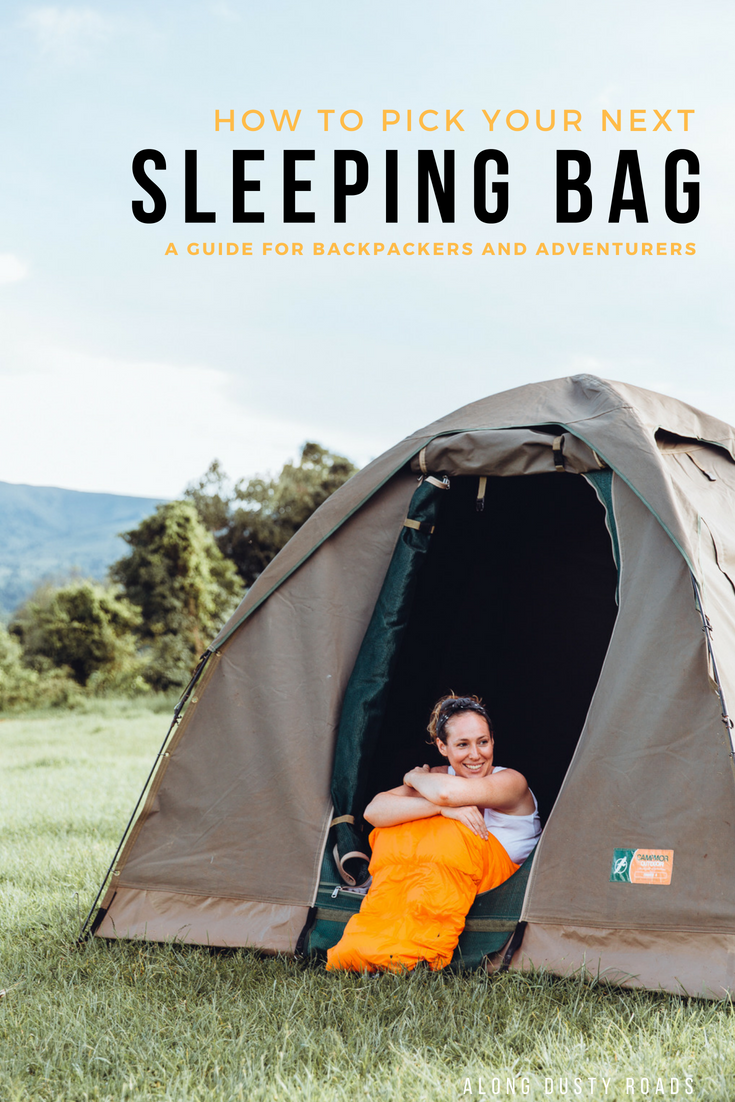Remember when you were young - really young - and the most important decision for a sleeping bag was whether it was decorated with Thomas the Tank Engine, Fireman Sam or Postman Pat?
Maybe that was just Andrew.
Fast forward to the present day, and as much as we wish that which cartoon character adorned the outside remained the number one consideration, for the serious traveller there are many more salient factors to consider. After all, a lot depends on making the right choice; it can be the difference between whether you wake up ready to hit the mountain, trail safari in the right mood and with the necessary energy, or if a night in the wilderness turns into either a pleasure or a test of your shivering perseverance. Over the course of days or weeks, the camping experience can have a massive impact on your overall happiness on the road.
With that in mind, here are the key things to think about so you can pick the best sleeping bag for your next adventure.
Why are you bringing a sleeping bag?
Choosing the best sleeping bag to travel with is different to taking one to just tide you over for a few nights at a festival. For the latter, something bulky, cheap and disposable which you can chuck in the car boot or outside your rucksack is absolutely fine for your needs - but you'll quickly regret bringing that very same sleeping bag with you on the road (especially if you haven't washed it since Glasto...).
Space matters more. Performance matters more. Durability matters more.
We knew that our sleeping bag was going to be one of our most important pieces of kit for three weeks camping across five countries in Africa. We also wanted to choose a bag which would be suitable for future trips in different parts of the world - like when we head back to Patagonia and do some trekking in the Peruvian summer - as well as for any spontaneous camping at home in the UK.
So, the first thing to consider is whether your next sleeping bag is being purchased as a serious and essential investment for your future travel style and kit list, or if you're happy to simply have something which does an OK job for the next few months. Obviously, the quality and cost disparity between those two positions will be notable.
If camping outdoors will be a regular occurrence on your travels, then investing in a good sleeping bag is sensible - we're hoping that our current Rab sleeping bags will last us at least the next 5-10 years.
Weight, Bulk & Rolling
Although your sleeping bag's warmth and suitability for your surroundings is key (and we'll discuss this later in the post), for a traveller your main focus should also be on choosing one which is also lightweight and doesn't take up a huge amount of space in your main backpack. This is particularly vital on any long-term camping or hiking trip where you will be laden down with all manner of other essential equipment which doesn't allow for space to be wasted. As a guide, our Neutrino 200s shrink down to 30cms x 17cms when we're transporting them in our backpacks - if you can get something which is around that range for its packed dimensions, then you're doing very well. As for the weight, get something under 800 grams.
Note that by prioritising a sleeping bag's weight and packed size, this usually means you may have to sacrifice a little on its warmth, but we think a traveller will appreciate the space saved by a lightweight sleeping bag (and you can always stick an extra jumper on if you really need it!).
Another important point for us is the 'rollability' of a sleeping bag. It may sound a bit silly to the more experienced of you, but our historic experience with sleeping bags on school trips, individual hikes and when we'd borrowed them on tours in Latin America was that it always took an absolute age for us to roll them back up properly in the morning. This usually meant several attempts at roll up, with the end result being one of us hastily punching it and the overspill into the stuff sack to create some bizarrely shaped bulky thing we then had to throw into our backpacks. In Africa, where 5 a.m. wake up calls were normal and we all had to be in the bus within half an hour, speed was key - and we got rolling and stuffing our sleeping bags down to a fine art (under 25 seconds per sleeping bag actually, with only one of us rolling and packing!).
Of course, it's difficult to judge this before you buy one. However, a sleeping bag's ultimate packability size and weight are directly linked to its filling so, the better the sleeping bag the easier it will usually be to roll up very compactly.
What's on the inside?
When purchasing a premium sleeping bag, you'll have two options when it comes to the material used to insulate it: down or synthetic.
Something that is thankfully now being taken seriously by some leading outdoor clothing and equipment companies is the use of ethical down. If you're unaware of the issues, then down is sourced from the feathers of ducks or geese. Traditionally, sourcing the feathers included live plucking, force feeding and animals being stored and treated in awful conditions. Increased public awareness and changing company cultures has meant that supply chains are being investigated and improved, with responsibly sourced down now the only way certain companies will source the material. The Responsible Down Standard is the organisation in place which "safeguards the welfare of geese and ducks that provide down and feathers", and aims to ensure the feathers does not come "from animals that have not been subjected to an unnecessary harm". The standard in place is voluntary, and we would encourage you to only ever purchase a down product when absolutely necessary and only from a company which has RDS certification.
Of course, it's not perfect and for various reasons, some may never purchase down products due to their own ethical standpoint. We're both vegetarians and staunch advocates of the ethical treatment of animals, and so we've avoided down historically (even though this means we have the worst pillows known to man in our flat). But we viewed a sleeping bag as the single purchase where down was a real difference maker in the long term. It's worth nothing however that the alternatives can do a really fantastic job. Nonetheless, down is lighter, easier to compress and performs excellent in cold, dry conditions - its natural properties make it an ideal natural choice for sleeping bags used for serious travel.
Synthetic insulation is however much better in wet conditions at keeping you warm, is quicker-drying, cheaper overall and doesn't pose the same ethical dilemma - it does have a poorer warmth to weight ratio than down however.
So, do your research into what each company is doing on down and please only go for a down sleeping bag if it includes responsibly sourced down certification, and it is necessary for your purposes. Remember, synthetic will still do a great job particularly if you have a smaller budget and will be travelling frequently in wet climates.
Understand Temperature Ratings
A sleeping bag which means you're still freezing in your tent isn't exactly doing it's job. So, it's extremely important to take the time to research and understand the conditions for which the bag has been made - for this you need to look at 'temperature ratings'. Thankfully, there's a European requirement (the EN13537) to standardise temperature ratings on sleeping bags, which makes it all a little easier to understand.
The four standard definitions for every sleeping bag are:
Upper Limit: the temperature at which a standard male can sleep without excessive perspiration. It is established with the hood and zippers open and with the arms outside of the bag.
Comfort: the temperature at which a standard female can expect to sleep comfortably in a relaxed position.
Lower Limit: the temperature at which a standard male can sleep for eight hours in a curled position without waking.
Extreme: the minimum temperature at which a standard female can remain for six hours without risk of death from hypothermia (though frostbite is still possible)
For the purpose of these measurements, "a 'standard man' is assumed to be 25 years old, with a height of 1.73 m and a weight of 73 kg; a 'standard woman' is assumed to be 25 years old, with a height of 1.60 m and a weight of 60 kg."
As you can see, you really want to be at 'comfort' and very rarely want to be testing your sleeping bag's 'extreme' rating. However, as we're assuming you're not conquering Everest, then we'd advise you to focus on the comfort and lower rating when buying your next sleeping bag. The 'Upper' limit is when you will start to feel a bit toasty...but then this is inevitable if you're camping in a hot place and you simply will have adapt accordingly (remember, it's easier to cool down than warm up).
Note that the ratings above are only a 'guide' and each person will react differently to conditions. Some sleeping bag companies will also add their own rating or advice, in addition the ERN ones, to give you a more accurate rating based on their own experience or testing.
What does this all mean to the traveller who is going to camp in a diverse range of climates and destinations?
We think a versatile sleeping bag is more important for your travels rather than a specialist one for extreme cold temperatures, which is why we picked Rab sleeping bags with a Comfort rating of 6.5°C (44°F) and a Lower Limit of 1.5°C (35°F). For your own choice, do the necessary research based on the type of temperatures you're likely to counter and the experience of others who have camped in destinations you know you'll visit and perhaps reach out to them to understand what Comfort rating is advisable.
And when the time comes for you to scale Everest, then that's when you should go and buy the best sleeping bag out there for extreme temperatures, rather than the one you bring with you to the Cotswolds, Kilimanjaro and Australia!
Does Shape Matter?
To be honest, we had shape down as the least important factor when selecting our Africa sleeping bags, and prioritised the above features more than shape.
It does play a role however. For example, one half of us didn't realise until fairly recently that a sleeping bag's job is not to warm you up but rather to conserve your body heat - and so logically if you have a sleeping bag which isn't a snug fit, its performance will be impaired.
We plumped for a 'Mummy' shaped one because it ticked all the other boxes - and it sort of looks like the shape of sleeping bag that proper hikers use! Since we've done more research, it's pretty clear that this shape is hands down the most effective and efficient for warmth to weight and packability, so you should definitely go for it.
Hoods, Pillows & Stuff Sacks
These extra feature shouldn't be the deciding factors for your sleeping bag investment - for more technical or extreme adventurers, some of these may however be more important for what you're doing on the road.
Personally, we wouldn't buy one which doesn't come without a hood (and any bag that meets the points mentioned thus far will always have one), whilst a dry bag compression stuff sack will help to keep damp off the bag when transporting. Our Rab sleeping bags came with the roll-down and clip dry bag stuff sack which has an optional compartment at the top which fit our inflatable travel pillows and head torches, meaning we have easy access to them when setting up for the night. They also came with a large white cotton case (which fits easily inside when packed away with the sleeping), which is supposed to be a long-term storage sack but works excellently as a pillow case when camping!
Storage & Care of Your Sleeping Bag
A final thing to consider when purchasing a higher level sleeping bag is the fact that you want to make that investment last for as long as possible.
One thing we didn't realise until a friend told us was that when you're back home you shouldn't leave your sleeping bag rolled up tightly in its stuff sack as it damages the fibres; instead you should let it breathe so it maintains its 'loft'. Right now, ours are bundled loosely into the cotton sacks they came with (a large pillow case would be a good alternative). In short, don't permanently store your bag in its itty-bitty stuff sack when you're not travelling; the longer you compress the insulation, the more loft it loses.
It is always worth leaving your sleeping bag out to air on the washing line for a day or two once you've returned from a trip, in order to air dry it and minimise any lingering camping smells. Note that a synthetic bag can usually be cleaned in a large washing machine (double check the specific manufacturer instructions), whilst a down one is more complicated and may require specialist cleaning products or a professional clean (again, check the label)
Lastly, using a cotton or silk sleeping bag liner means your own sleeping bag will stay cleaner and fresher for longer (and the cotton sleeping bag liners are much easier to wash regularly than a sleeping bag).

